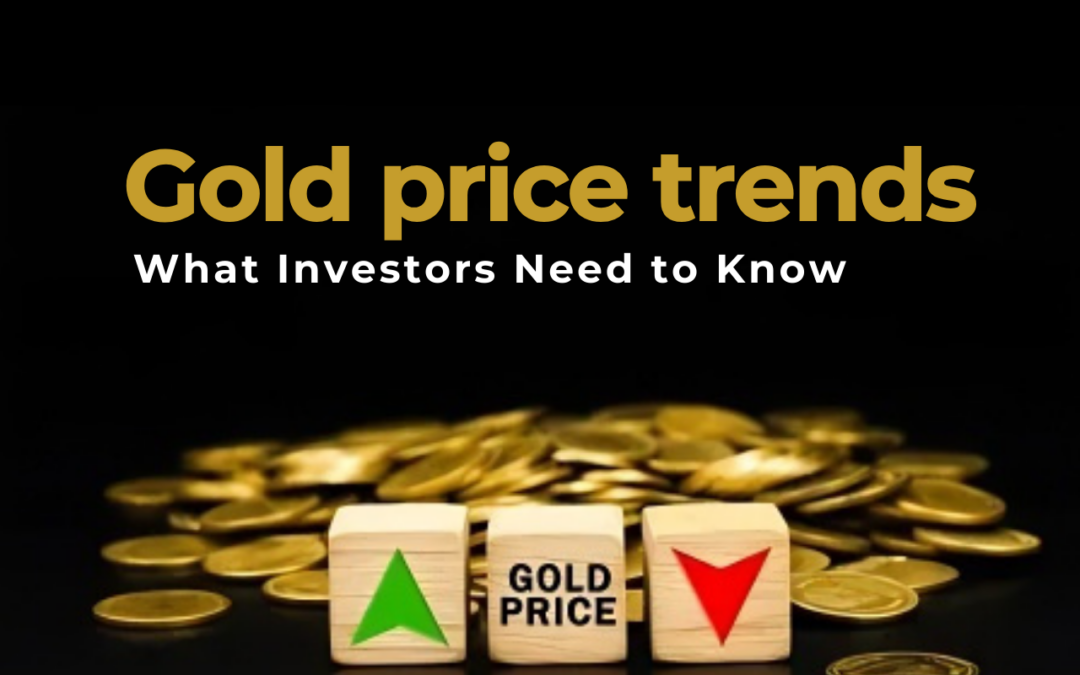Gold price trends have long been considered a safe-haven asset, providing protection against economic uncertainties, inflation, and geopolitical tensions. Over the past five decades, its price has experienced significant fluctuations, influenced by various global events and economic policies. Understanding these historical trends, current market conditions, and future projections is crucial for investors seeking to make informed decisions. In this comprehensive analysis, we will delve into the historical price movements of gold, examine the present market scenario, and explore future forecasts, providing valuable insights for investors.
Gold Prices: A Historical Perspective
The 1970s: Post-Bretton Woods Surge
The 1970s marked a pivotal era for gold prices. In 1971, President Richard Nixon ended the Bretton Woods Agreement, severing the direct convertibility of the U.S. dollar to gold. This decision allowed gold prices to float freely, leading to a substantial increase from $35 per ounce to nearly $200 by the mid-1970s. The decade’s end saw prices soaring to approximately $850 per ounce, driven by high inflation, geopolitical tensions like the Iranian Revolution, and the Soviet invasion of Afghanistan.
The 1980s: Decline Amid Monetary Tightening
The 1980s witnessed a decline in gold prices as the U.S. Federal Reserve, under Chairman Paul Volcker, implemented aggressive interest rate hikes to combat inflation. These measures strengthened the U.S. dollar and reduced inflation, leading gold prices to fall from their previous highs, stabilizing between $300 and $500 per ounce.
The 1990s: Stability and Central Bank Sales
The 1990s were characterized by relative stability in gold prices, fluctuating between $250 and $400 per ounce. Economic growth, low inflation, and a robust stock market reduced the appeal of gold. Additionally, central banks, particularly in Europe, sold portions of their gold reserves, further suppressing prices.
The 2000s: Bull Market Resurgence
The early 2000s marked the beginning of a bull market for gold. Factors such as the bursting of the dot-com bubble, the 9/11 attacks, and subsequent geopolitical uncertainties led investors to seek safe-haven assets. Gold prices rose from around $250 per ounce in 2001 to over $1,000 by 2008. The 2008 global financial crisis further propelled gold prices, reaching approximately $1,200 per ounce by the end of 2009.
The 2010s: Record Highs and Subsequent Correction
In September 2011, gold prices hit an all-time high of around $1,920 per ounce amid concerns over the European debt crisis and U.S. fiscal issues. However, as economies recovered and investor confidence returned, gold prices corrected, declining to about $1,050 per ounce by late 2015. The latter half of the decade saw prices stabilize between $1,100 and $1,400 per ounce.
The 2020s: Pandemic-Induced Surge
The onset of the COVID-19 pandemic in 2020 led to unprecedented economic uncertainty. Investors flocked to gold, driving prices to a new all-time high of $2,075 per ounce in August 2020. Massive fiscal stimulus measures, low-interest rates, and concerns over currency devaluation contributed to this surge. While prices fluctuated in subsequent years, gold maintained its status as a crucial asset for risk diversification.
Present Gold Price Conditions (March 2025)
As of March 4, 2025, gold prices are experiencing notable movements influenced by various economic and geopolitical factors.
Current Price Levels
- Spot Gold Price: $2,892 per ounce
- Gold Futures: $2,902 per ounce
Factors Influencing Current Prices
Several key factors are currently influencing gold prices:
- Trade Tariffs: U.S. President Donald Trump’s recent implementation of tariffs on imports from Canada, Mexico, and China has created market uncertainty. These tariffs include a 25% duty on Mexican and Canadian imports and an increase in tariffs on Chinese goods to 20%. In response, China has imposed additional tariffs of 10%-15% on U.S. imports and new export restrictions.
- Inflation Concerns: The new tariffs are perceived as inflationary, boosting gold’s safe-haven appeal. However, higher U.S. inflation could lead to prolonged periods of elevated Federal Reserve interest rates, affecting gold’s attractiveness.
- Central Bank Purchases: Increased gold purchases by central banks, notably from China and India, have contributed to the recent surge in gold prices.
- Geopolitical Uncertainties: Ongoing geopolitical tensions, including the situation with Russia and potential shifts in U.S. alliances under President Trump, have reinforced gold’s status as a haven asset.
- Market Volatility: Investor anxiety over the tech sector, concerns about AI spending, and weak consumer sentiment have led to increased demand for gold as a store of value.
Future Gold Price Predictions
Looking ahead, analysts have proposed different scenarios for gold prices in 2025 and beyond.
Bullish Scenario
In a bullish case, gold prices could exceed $3,500 per ounce by 2026 due to:
- Continued central bank gold accumulation.
- Persistently high inflation levels.
- Global economic instability leading to increased investor demand for safe-haven assets.
- Declining U.S. dollar strength due to excessive debt levels and monetary easing.
Bearish Scenario
A bearish outlook suggests gold prices may decline to $2,200 per ounce if:
- The U.S. Federal Reserve maintains high interest rates, reducing gold’s appeal.
- Inflation stabilizes, decreasing demand for gold as an inflation hedge.
- The stock market experiences strong growth, diverting investments away from gold.
Neutral Scenario
A moderate scenario predicts gold prices stabilizing between $2,500 and $3,000 per ounce, influenced by:
- A balanced economic recovery.
- Steady inflation rates without extreme fluctuations.
- Gold continuing to serve as a hedge, but with no aggressive upward or downward trends.
Conclusion
Gold price trends have demonstrated resilience over the past 50 years, responding to economic cycles, inflation, and geopolitical events. As of 2025, gold remains a crucial investment asset amid uncertainties in global markets. Investors should consider historical trends, current economic conditions, and expert forecasts when making investment decisions. Whether gold price trends continue to surge or stabilize, it will remain a valuable component of diversified investment portfolios for years to come.












